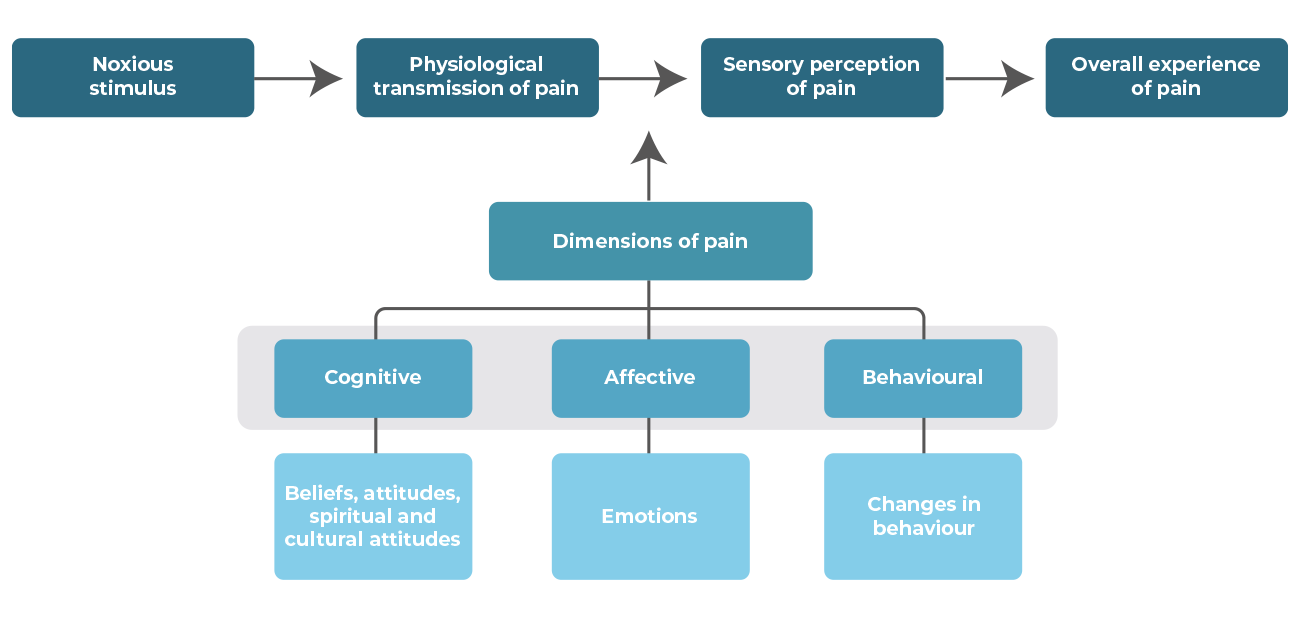Pain is a conscious experience, and interpretation of nociceptive input is influenced by memories as well as emotional, pathological, genetic, and cognitive factors. Resultant pain is not necessarily related linearly to the nociceptive drive or input; neither is it solely for vital protective functions. This is especially true in the chronic pain state. Furthermore, the behavioral response by a subject to a painful event is modified according to what is appropriate or possible in any particular situation. Pain is, therefore, a highly subjective experience, as illustrated by the definition given from the International Association for the Study of Pain.1









